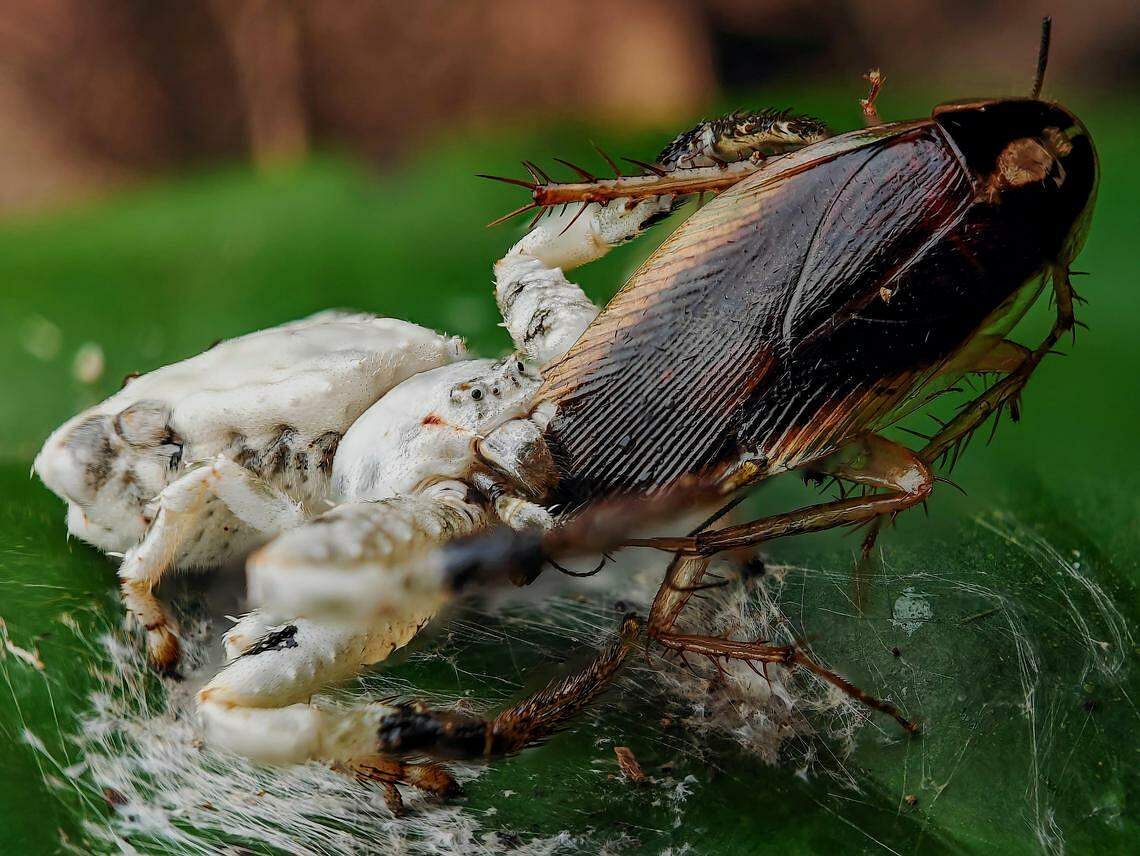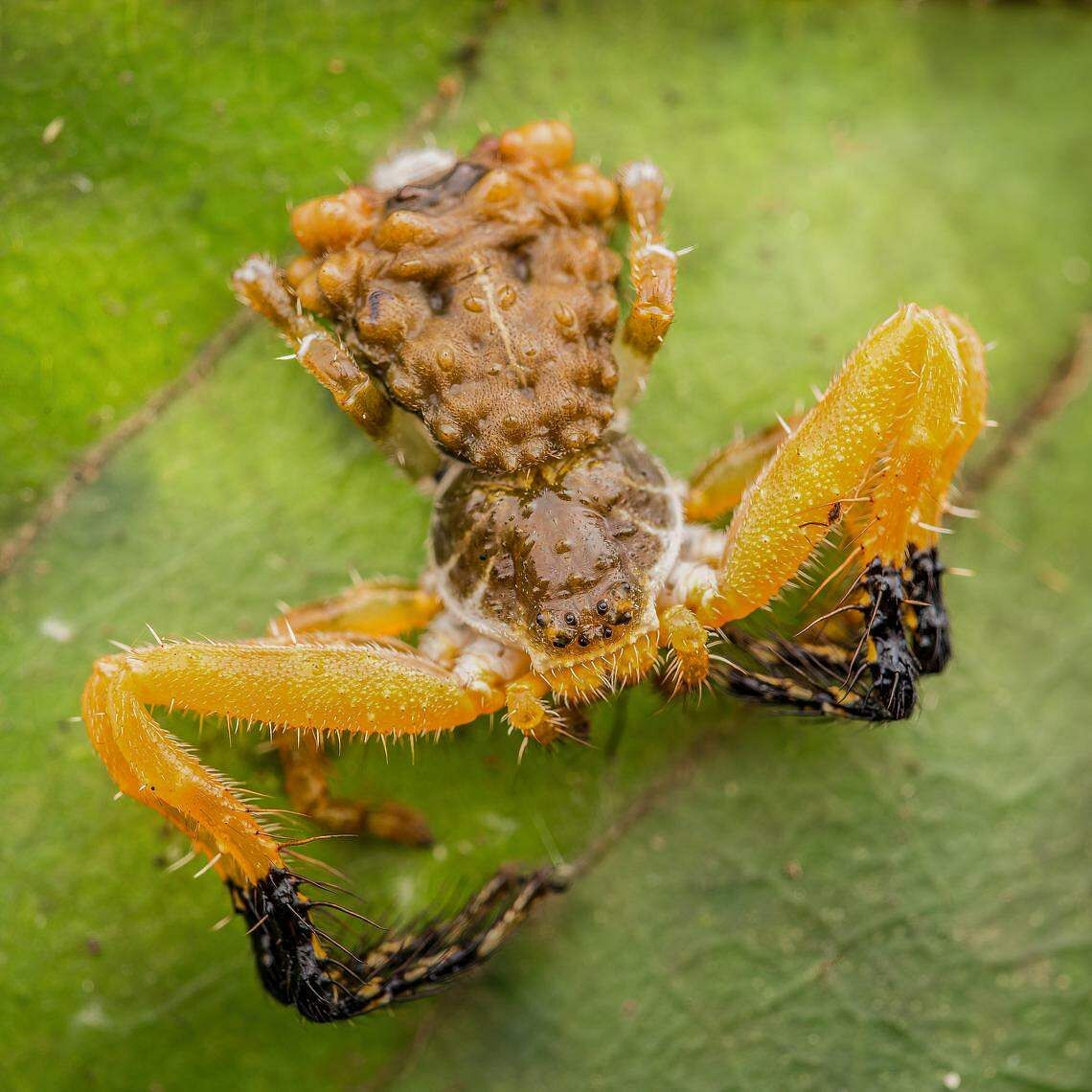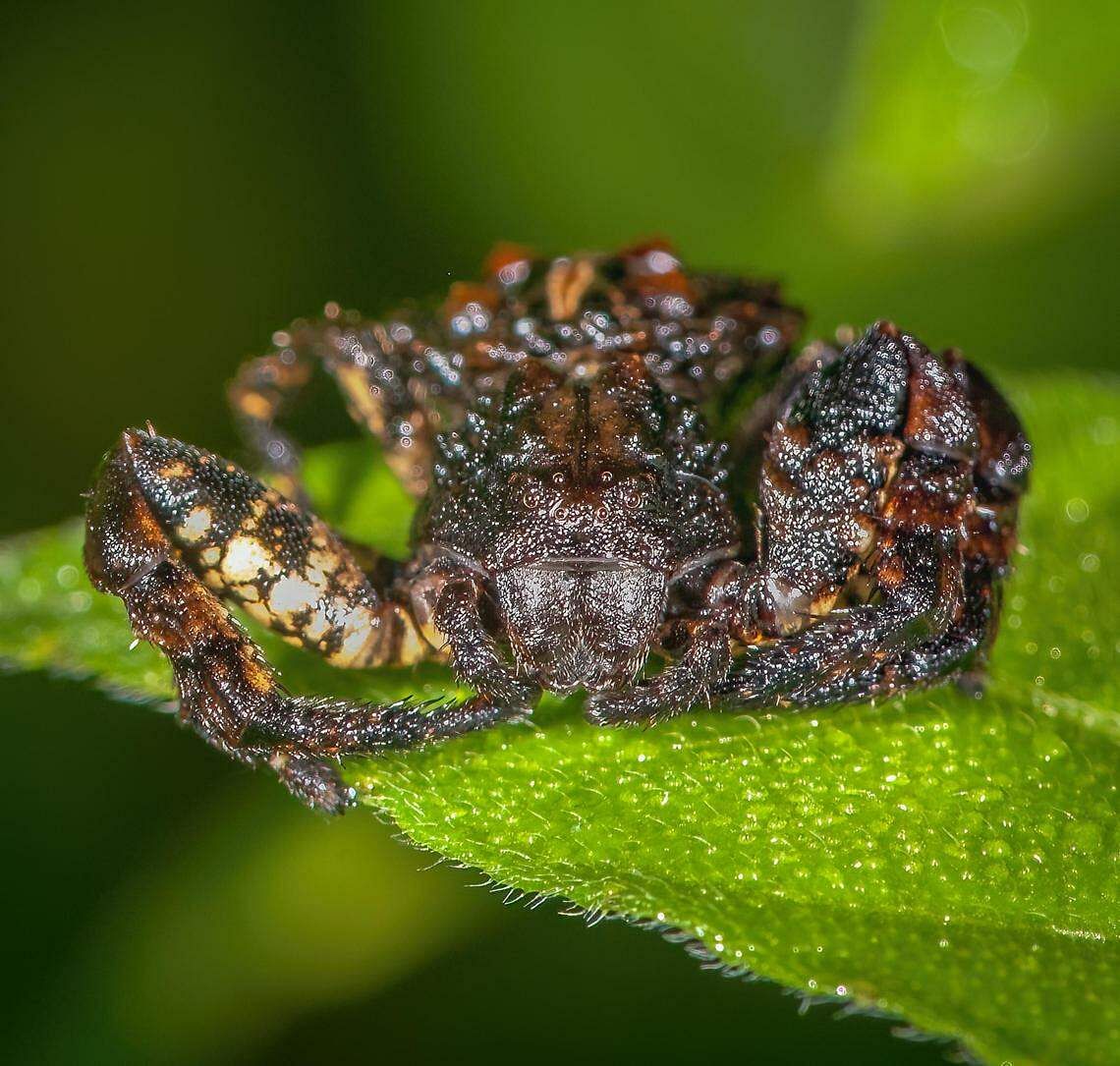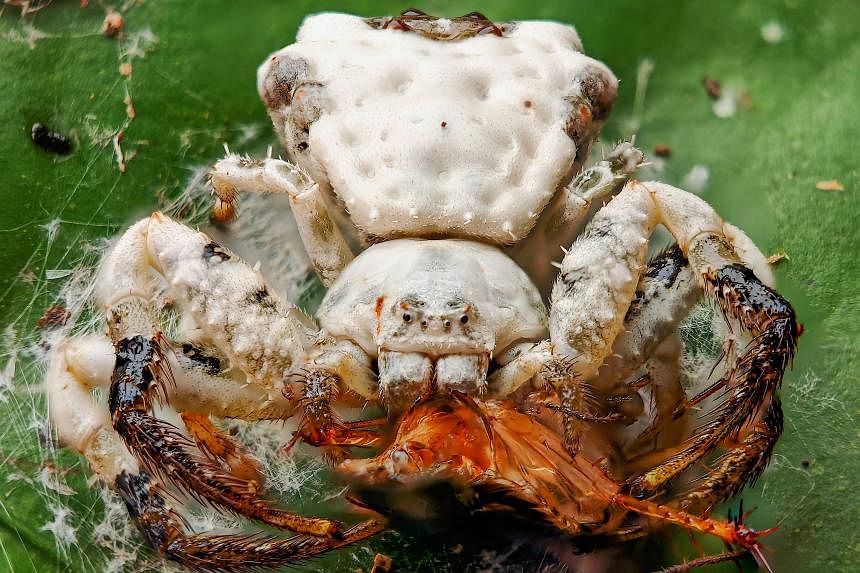SINGAPORE - Since national serviceman Luke Ang caught the bug of photographing the world of tiny wildlife in 2020, he has been scrutinising every bird dropping that he sees on a leaf.
The 20-year-old hit pay dirt in October 2023 when he saw a type of bird-dropping crab spider (Phrynarachne decipiens) that had never been recorded in Singapore before.
Mr Ang was then on a night walk at Upper Seletar Reservoir Park with fellow nature enthusiast Wong Kwang Ik, 30.
Their prize find: a rare arachnid that resembled – and even smelled like – a bird dropping splattered on a leaf, except that it was chomping on a cockroach. Its body was about 17mm wide.
Mr Ang said: “A discovery like this is really satisfying after so many nights of searching futilely for an interesting subject.”
That night, he spent more than two hours documenting the spider’s feeding behaviour by taking more than 400 photographs with his phone.
In January, the sighting by Mr Ang and Mr Wong was published in the Lee Kong Chian Natural History Museum’s Singapore Biodiversity Record Archives. The documented species joins two other kinds of bird-dropping crab spiders (Phrynarachne tuberosa and Phrynarachne ceylonica) that call Singapore home.

The Phrynarachne decipiens is not new to South-east Asia, which has the world’s highest concentration of bird-dropping crab spiders. It was first recorded as seen in the forests of Indonesia in the 19th century by a Scottish naturalist, who marvelled at how its silken web mimicked the fluid part of a bird’s dropping.
The species is almost completely white, whereas others of its kind come in varying shades of white and dark colours.
For years, the spider and its relatives’ unusual disguise has intrigued and puzzled scientists.
The faecal facade and odour of these spiders are part of a ploy that acts as both a repellent to predators and a charm offensive to lure prey like flies, which rely on bird droppings as a food source, they found.
In 2021, for instance, scientists provided the first experimental proof that the seemingly harmless appearance of the spiders lured more prey than those that did not have a similar masquerade.
Like other members of the crab spider family, bird-dropping spiders are known to ambush unsuspecting prey that land on their leaves, often remaining in one place for hours or even their whole life.
Spider experts said it is unsurprising that P. decipiens has been found in Singapore, which has more than 900 species of spiders.
Associate Professor Li Daiqin, a biologist at the National University of Singapore who co-wrote the 2021 study, said it is likely that the spider has always been hiding in Singapore’s forests.

“They are not easy for laymen to spot because of their camouflage and inactivity,” said Dr Li, who has never seen a bird-dropping crab spider in Singapore despite studying spiders for nearly 40 years.
Retired ambassador and spider expert Joseph Koh agreed, adding that the distribution pattern of P. decipiens mirrored that of many other spiders in Singapore, which can also be found in parts of Indonesia and Malaysia.
To conclude that the spider is a species that can be found in Singapore, more specimens have to be sighted, said Mr Koh, adding that there is still a possibility the spider is a stray that was accidentally introduced here via Indonesian or Malaysian plants.
He said: “The male of this species has never been collected anywhere in the world. It will be a scientific jackpot if we can find a pair together and get the male properly described in a scientific journal.”
For Mr Ang, the finding spells hope for spiders, which are threatened by the loss of their forest habitat to urbanisation, which even their disguises cannot ward off.

He said: “The discovery that such species exists locally shows that species richness isn’t completely gone and still persists in pockets of our forests, albeit in a much more restricted capacity compared to our neighbours.”
The fact that the bird-dropping crab spider was found near one of two remaining patches of undisturbed forest in Singapore – Nee Soon Swamp Forest – highlights the importance of preserving such ecosystems as these may be the last habitats that support such wildlife, he added.
The discovery has been “very rewarding” for Mr Ang, who started photographing invertebrates – animals that do not have backbones – four years ago after learning from social media that Singapore has a diverse array of these smaller, lesser-known species.
He said: “It’s exciting because there’s always a chance that you can find something completely new to science. The sheer scale of undiscovered findings is vast, compared to other fields of zoology.
“Some of my fellow naturalists have even described it as ‘Pokemon for adults’.”


